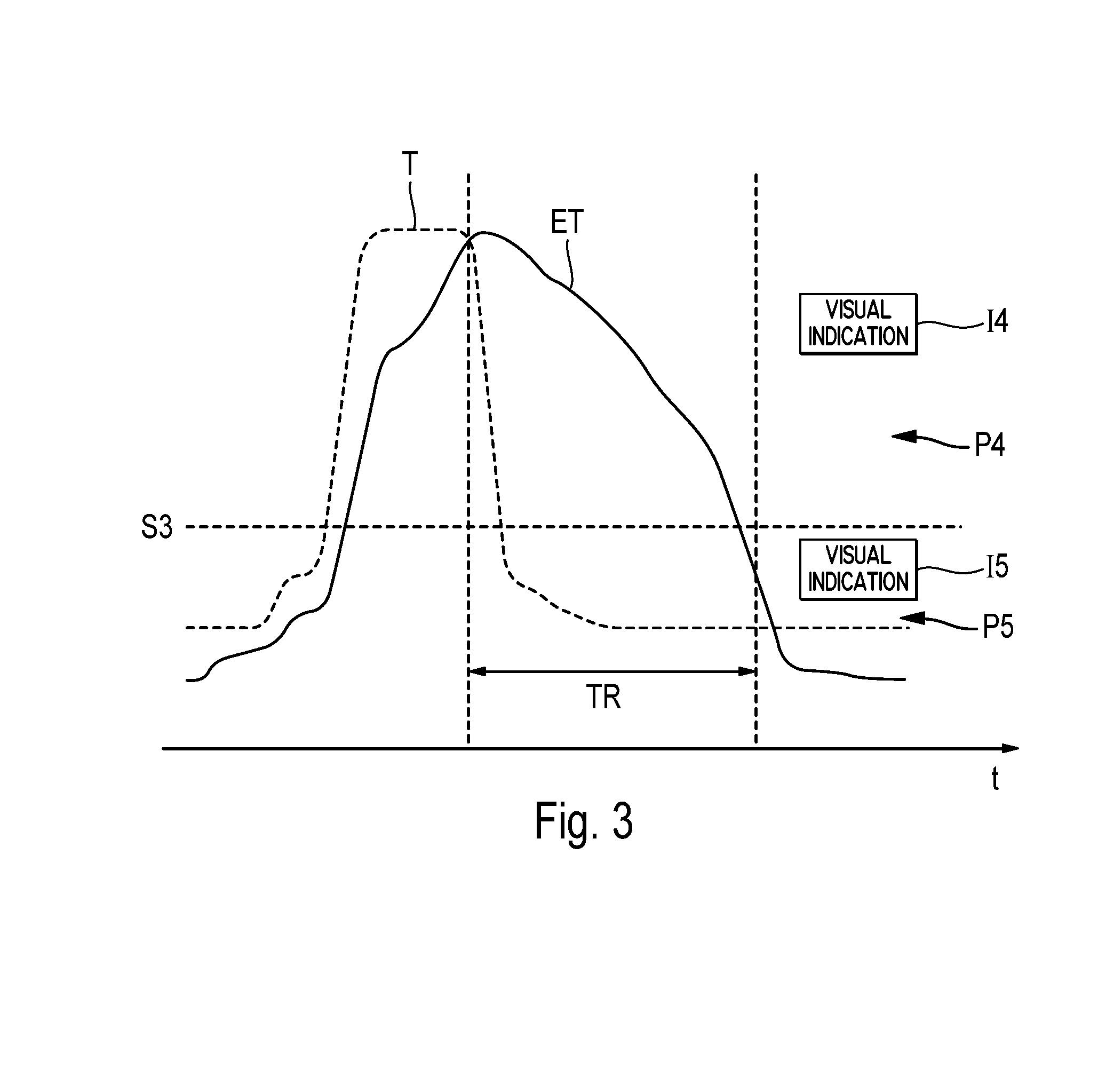Method and device for monitoring a turbine engine of an aircraft
a technology for aircraft and turbine engines, which is applied in the direction of machines/engines, efficient propulsion technologies, instruments, etc., can solve the problems of mechanical lock of the turbine, significant damage to the propulsive system, and cracks in the metal structure of the engine components,
- Summary
- Abstract
- Description
- Claims
- Application Information
AI Technical Summary
Benefits of technology
Problems solved by technology
Method used
Image
Examples
first embodiment
[0077]the invention is applied to an aircraft which is in a ground phase. In this case, when the turbine engine monitored is operating, the aiding device 1 shows on the screen 9 an indication indicating the risk involved in a case of a turbine engine shutdown (depending on the current thermomechanical condition calculated). Moreover, in this case, if a shutdown (whether wanted or not) of the turbine engine occurs, the aiding device 1 shows on the screen 9 an indication providing information relating to a possible turbine engine re-start. In particular, this indication can comprise a minimum waiting period being recommended before a re-start. Preferably, the screen 9 is a conventional screen which displays primary control parameters of the aircraft engines.
[0078]Thus, for an application on the ground, an indicator is provided within the cockpit which allows to indicate to the crew the risk involved in the case of an engine shutdown. This indication enables the shutdown of engines of ...
second embodiment
[0099]Furthermore, the invention is applied to an aircraft which is in a flight phase. In this case, if a shutdown (whether wanted or not) of the turbine engine occurs, the device 1 displays on the viewing screen 9 an indication I4, I5 which gives information about the operational piloting procedure to be followed in order to enable the engine to be re-started in optimum conditions. If necessary, such an indication can also indicate an optimum aircraft speed for the turbine engine in windmilling re-start.
[0100]In the embodiment described hereinafter (by way of example) in reference to FIG. 3, the means 5 compare the current value ETc (determined by means 3) of the thermomechanical condition ET to a single threshold value S3, and indications I4 and I5 displayed on the viewing screen 9 depend on the result of this comparison. In this case, the turbine engine can have one of the two following thermomechanical conditions P4 and P5:[0101]critical (P4), when the current value ETc is highe...
PUM
 Login to View More
Login to View More Abstract
Description
Claims
Application Information
 Login to View More
Login to View More - R&D
- Intellectual Property
- Life Sciences
- Materials
- Tech Scout
- Unparalleled Data Quality
- Higher Quality Content
- 60% Fewer Hallucinations
Browse by: Latest US Patents, China's latest patents, Technical Efficacy Thesaurus, Application Domain, Technology Topic, Popular Technical Reports.
© 2025 PatSnap. All rights reserved.Legal|Privacy policy|Modern Slavery Act Transparency Statement|Sitemap|About US| Contact US: help@patsnap.com



